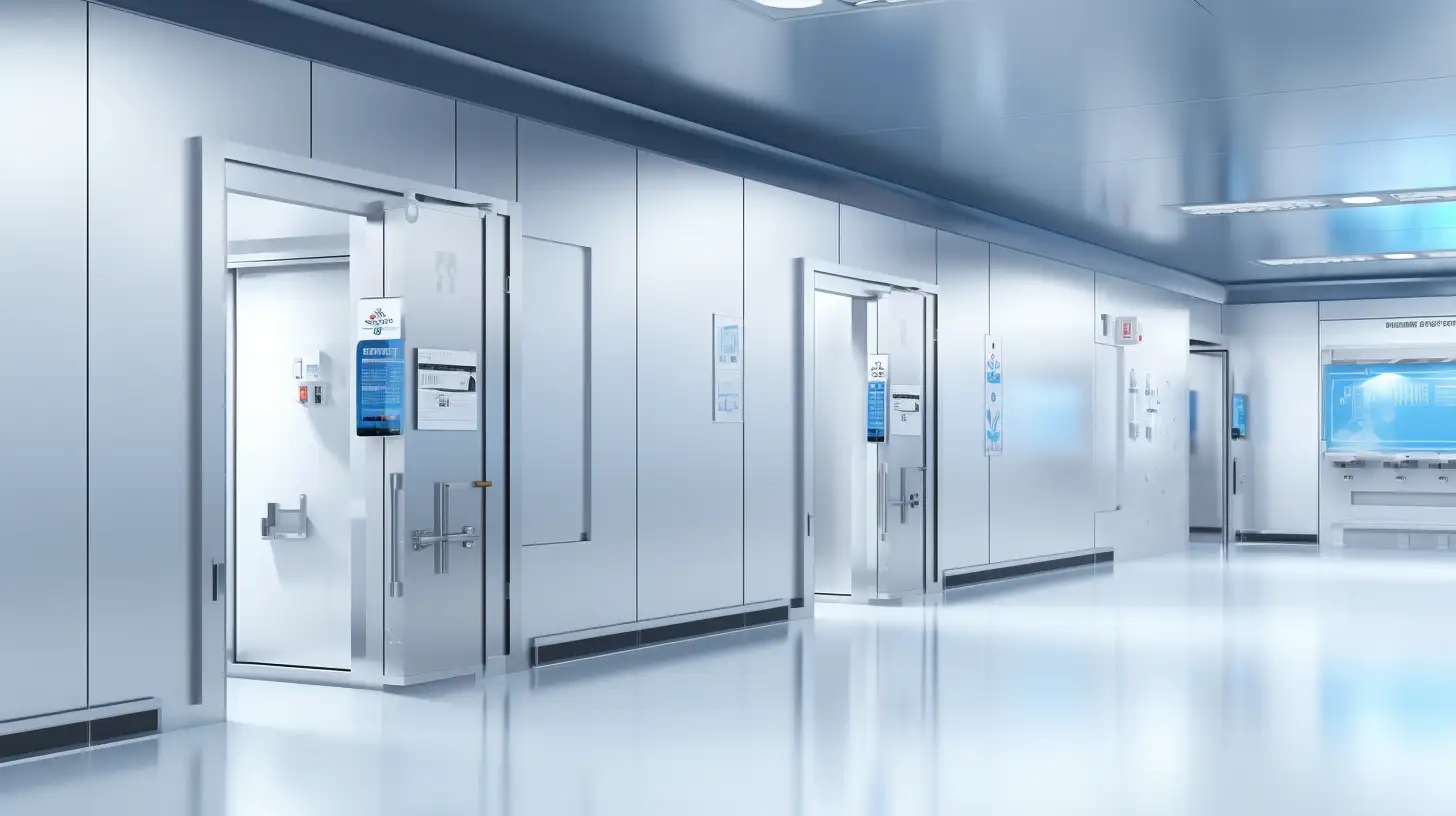Walk-in refrigerators and walk-in freezers are essential pieces of equipment in industries where temperature-controlled storage is critical, such as in restaurants, grocery stores, pharmaceutical companies, and food processing facilities. These units provide ample space for storing large quantities of perishable items and play a vital role in maintaining product quality, ensuring food safety, and streamlining operational efficiency.
In this article, we will explore the various aspects of walk-in refrigerators and walk-in freezers, including their types, key features, benefits, and maintenance tips. We will also look into how these refrigeration units can improve business operations and what factors to consider when choosing the right walk-in unit for your needs.
What is a Walk-In Refrigerator?
A walk-in refrigerator, also referred to as a cold room or walk-in cooler, is a large, enclosed, refrigerated space used for storing perishable goods. These units come in a variety of sizes and configurations and are commonly found in commercial kitchens, restaurants, supermarkets, and any place where food storage is required at temperatures above freezing. Walk-in refrigerators generally operate at temperatures ranging from 33°F to 40°F (0.5°C to 4.4°C), which is ideal for preserving fresh produce, dairy products, and meat.
What is a Walk-In Freezer?
A walk-in freezer is similar to a walk-in refrigerator but designed to maintain much colder temperatures, typically ranging from -10°F to 0°F (-23°C to -18°C). These units are used for freezing and storing large quantities of frozen food, such as meats, vegetables, and ice cream. Walk-in freezers are critical in keeping frozen products fresh for extended periods, preventing spoilage, and ensuring that food items remain safe to consume.
Types of Walk-In Refrigerators and Walk-In Freezers
Walk-in refrigerators and freezers come in different types, each designed to suit specific operational needs. The two most common types are modular and pre-fabricated units:
- Modular Walk-Ins Modular walk-in refrigerators and freezers are designed to be flexible and customizable. They are made of panels that can be assembled on-site, allowing you to configure the unit to fit specific space requirements. This type is ideal for businesses that require unique sizing or layout adjustments.
- Pre-Fabricated Walk-Ins Pre-fabricated walk-ins are ready-made units that are manufactured in standard sizes. These units are more cost-effective than modular designs and are ideal for businesses with straightforward storage needs and limited space.
Both modular and pre-fabricated walk-in refrigerators and freezers can be installed indoors or outdoors, depending on the available space and operational needs.
Key Features of Walk-In Refrigerators and Walk-In Freezers
Modern walk-in refrigerators and freezers come equipped with advanced features to enhance functionality and performance. Some of the key features include:
1. Insulated Panels
Walk-in units are constructed with insulated panels made from materials such as polyurethane or polystyrene. These panels ensure the temperature inside the unit remains stable by reducing heat transfer between the interior and exterior environments. Proper insulation is crucial to minimize energy consumption and maintain consistent temperatures.
2. Refrigeration System
The refrigeration system is the heart of a walk-in unit. It consists of a compressor, condenser, and evaporator, which work together to regulate the temperature. Refrigeration systems can be split (where the components are separated) or self-contained (where all components are housed in a single unit).
3. Temperature Control
Accurate temperature control is vital for ensuring that perishable items are stored at the right temperature. Most walk-in units come with digital thermostats and temperature monitoring systems, allowing users to set and maintain specific temperatures. Some systems even include alarms that notify users when temperatures fall outside of the designated range.
4. Flooring
The flooring in walk-in refrigerators and freezers is typically made of slip-resistant materials such as aluminum, stainless steel, or reinforced vinyl. Freezer floors are often equipped with built-in heaters to prevent frost buildup and ensure safe walking conditions.
5. Shelving and Racking
Efficient shelving and racking systems are essential for organizing products in walk-in units. Shelves are typically made of stainless steel or plastic-coated wire to withstand moisture and heavy loads. Adjustable shelves allow for flexible storage and easy access to items.
6. Doors
Walk-in refrigerators and freezers are equipped with heavy-duty, insulated doors that prevent cold air from escaping. These doors often feature self-closing mechanisms and magnetic gaskets to ensure a tight seal. For high-traffic areas, strip curtains or automatic sliding doors may be used to minimize temperature fluctuations.
7. Lighting
Interior lighting is essential for visibility inside the walk-in unit. LED lighting is commonly used in modern walk-ins because it is energy-efficient and provides bright, even illumination.
8. Air Circulation
Proper air circulation is crucial to ensure that cold air is evenly distributed throughout the unit. Most walk-in units are equipped with fans that maintain airflow, preventing temperature variations and cold spots.
Benefits of Walk-In Refrigerators and Walk-In Freezers
Walk-in refrigerators and freezers offer several advantages over traditional reach-in units, making them a preferred choice for businesses with large-scale storage needs. Some of the key benefits include:
1. Increased Storage Capacity
Walk-in units provide significantly more storage space than standard refrigerators and freezers. This is especially beneficial for businesses that handle large volumes of perishable goods or need to store bulky items like meat carcasses.
2. Enhanced Food Safety
Maintaining the correct temperature is critical for food safety. Walk-in refrigerators and freezers allow businesses to store perishable items at the appropriate temperature, reducing the risk of bacterial growth and foodborne illnesses.
3. Energy Efficiency
Modern walk-in units are designed with energy efficiency in mind. Features such as insulated panels, high-efficiency compressors, and LED lighting help reduce energy consumption, leading to lower utility bills and a reduced environmental impact.
4. Customization
With modular walk-in units, businesses can customize the size, layout, and configuration to meet their specific needs. Whether you need a small walk-in unit for a restaurant kitchen or a large cold room for a food processing facility, there is a solution available to fit your requirements.
5. Improved Organization
Walk-in units allow businesses to organize their products more effectively, ensuring that items are easy to locate and access. Shelving systems, racks, and storage bins help keep the unit tidy and maximize the use of available space.
6. Longevity and Durability
Walk-in refrigerators and freezers are built to withstand the demands of commercial use. Their durable construction and high-quality materials ensure they can withstand heavy loads, frequent usage, and exposure to moisture, ensuring long-lasting performance.
Choosing the Right Walk-In Refrigerator or Walk-In Freezer
When selecting a walk-in refrigerator or freezer, there are several factors to consider to ensure that the unit meets your business’s needs. Some of the key considerations include:
1. Size and Capacity
Determine the amount of storage space you require and ensure that the walk-in unit you choose is large enough to accommodate your needs. Keep in mind that modular units offer flexibility in terms of size and layout, while pre-fabricated units are available in standard sizes.
2. Location
Consider whether you will be installing the walk-in unit indoors or outdoors. Indoor units are typically easier to access but may require more space. Outdoor units can save valuable floor space inside your facility but may require additional insulation and weatherproofing.
3. Energy Efficiency
Energy efficiency is an important factor to consider, especially for businesses looking to reduce operational costs. Look for walk-in units with energy-saving features such as high-efficiency compressors, insulated panels, and LED lighting.
4. Refrigeration System
Choose between a self-contained or remote refrigeration system. Self-contained units are easier to install but may generate more heat and noise. Remote systems are quieter and more efficient but require more complex installation.
5. Compliance with Regulations
Ensure that the walk-in unit you choose complies with local health and safety regulations. This includes meeting standards for food storage, energy efficiency, and accessibility.
Maintenance Tips for Walk-In Refrigerators and Freezers
To keep your walk-in unit functioning optimally and prolong its lifespan, regular maintenance is essential. Here are some tips for maintaining walk-in refrigerators and freezers:
- Regular Cleaning: Clean the interior and exterior of the unit regularly to prevent the buildup of dirt, mold, and bacteria. Pay special attention to shelves, floors, and door seals.
- Inspect the Refrigeration System: Check the refrigeration system for any signs of wear or malfunction. This includes inspecting the condenser coils, evaporator fan, and compressor.
- Monitor Temperature: Regularly check the temperature inside the unit to ensure it remains within the desired range. Use a digital thermometer or temperature monitoring system for accurate readings.
- Check Door Seals: Inspect the door seals to ensure they are providing a tight seal. Damaged or worn-out gaskets can lead to cold air leakage, causing the unit to work harder and consume more energy.
- Defrost the Unit: If your walk-in freezer experiences frost buildup, defrost it regularly to prevent ice accumulation. This will improve airflow and maintain efficient cooling.
Conclusion
Walk-in refrigerators and walk-in freezers are indispensable for businesses that require large-scale temperature-controlled storage. With their increased capacity, energy efficiency, and ability to preserve perishable items, these units help improve food safety and streamline operations. By understanding the different types, key features, and maintenance needs of walk-in units, you can make an informed decision that benefits your business in the long run
Stay in touch to get more news & updates on Tribune Tribune!




